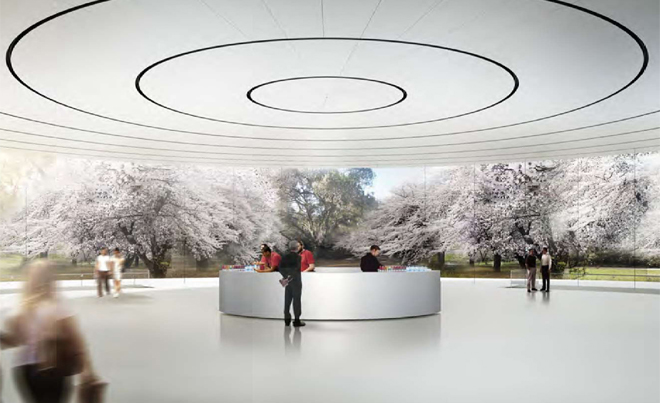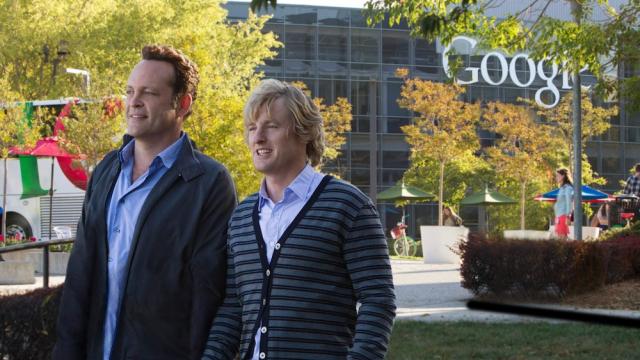Dave Eggers’ new book The Circle is a creepy tale about a tech company — which is proving to be annoying to people who actually work in tech. It’s also overhyped and may have even ripped off another Silicon Valley story. But there’s one thing Eggers gets the most wrong in The Circle, according to design critic Alexandra Lange.
The Circle itself.
Lange wrote a story at Medium that argues The Circle’s story could have been greatly enhanced — and perhaps more embraced by its audience — if only Eggers had painted a more imaginative portrait of The Circle’s (the company) physical spaces. Instead, she says, he lapses into ridiculously lazy tech architecture stereotypes that actually detract from his message. Here’s an example passage from the book:
The campus was vast and rambling, wild with Pacific colour, and yet the smallest detail had been carefully considered, shaped by the most eloquent hands. On land that had once been a shipyard, then a drive-in movie theatre, then blight, there were now soft green hills and a Calatrava fountain. And a picnic area, with tables arranged in concentric circles. And tennis courts, clay and grass. And a volleyball court, where tiny children from the company’s daycare centre were running, squealing, weaving like water. Amid all this was a workplace, too- four hundred acres of brushed steel and glass on the headquarters of the most influential company in the world.
In the briefest, most bizarre three-question self-interview, Eggers admits that he did not do any physical research for the book, never stepping foot inside a tech company headquarters. Lange says that’s a shame since Eggers’ ideas are based on some kind of throwback vision of a tech campus rather than how these structures actually exist in the real world. She would know: she wrote the ebook The Dot-Com City: Silicon Valley Urbanism.
The biggest thing Eggers gets wrong, Lange says, is the way that he relies on one material — glass — to delineate all the The Circle’s spaces when, in fact, that space is now divided using technology. “Silicon Valley proper has moved on from the physical barrier of glass to technologised, invisible lines,” she writes. “Employees sit not at cubicles but at long communal desks, divided by thin elbow-high barriers. Headphones are used to create zones of privacy; architecture is no longer thought necessary to that end.”

Whiteboards and brainstorming pods at Aol’s headquarters designed by O+A
There’s also no evidence of the idea-generation process, Lange argues. “Where, for example, are the whiteboards, which appear in every new dot-com office as a symbol that a billion-dollar idea might strike at any moment — even while you’re walking back from the bathroom? Where are the ‘breakout spaces,’ often furnished with IKEA throw pillows in the bright colours that represent fun at a disposable price?” (Perhaps I might have been seduced somewhat by Eggers’ depiction: I assumed that because the book takes place sometime in the near future, this tech company would be beyond Post-Its and brainstorming rooms. After all, they have retinal displays — tiny Google Glass-like screens the size of a contact lens.)
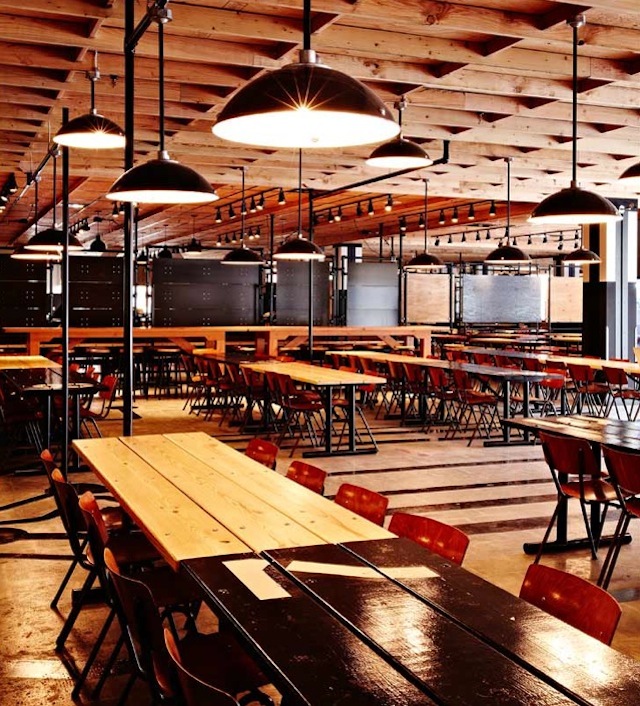
Not “awash with glass”: A cafe at Facebook designed by Roman and Williams
The Circle seems to draw the most inspiration from Facebook and Google, and it’s obvious that at least the stories about their cushy campuses did influence Eggers’ however contrived details. But it’s interesting to note that both campuses now have serious revisions to their headquarters in the works. Facebook is taking an almost whimsical approach, with a new campus being designed by Frank Gehry and a vintage industrial cafe from the edgy Roman and Williams. Google recently announced it’s slightly delaying plans to update its headquarters to make changes to the design — perhaps to distance itself more from the childish primary colours of the Googleplex.
But I had a funny feeling last week when Apple released new renderings of its headquarters, designed by Norman Foster. The glass and brushed steel. The displays and the screens. The orchards and fields.
I felt like I had seen it all before.
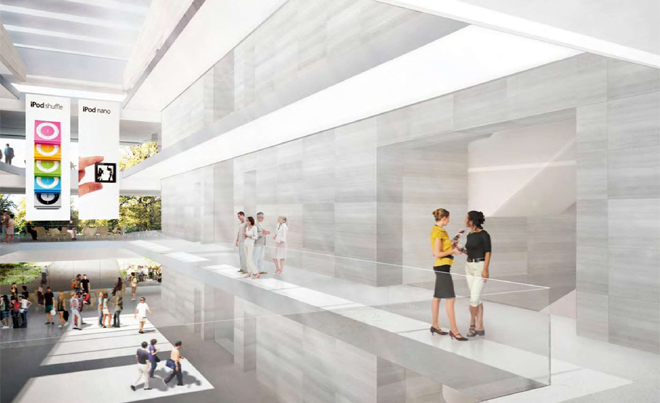
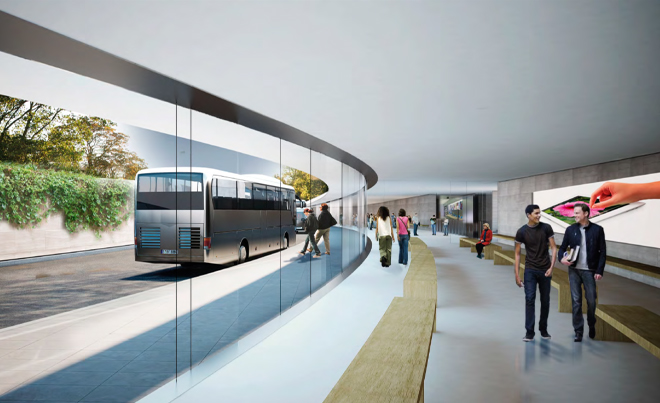
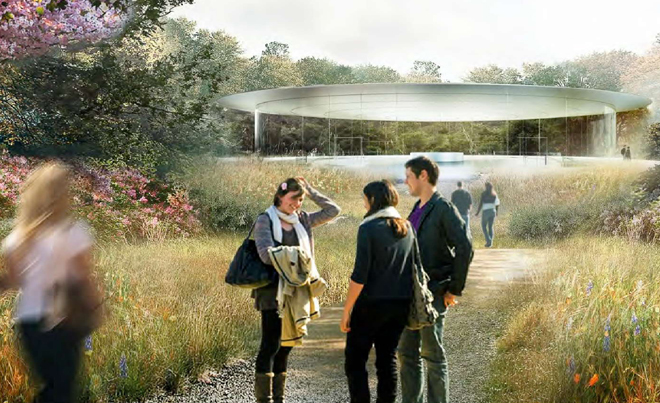
It would appear that Eggers’ vision is alive and well, at least in Cupertino.
And guess what: it’s a circle.
